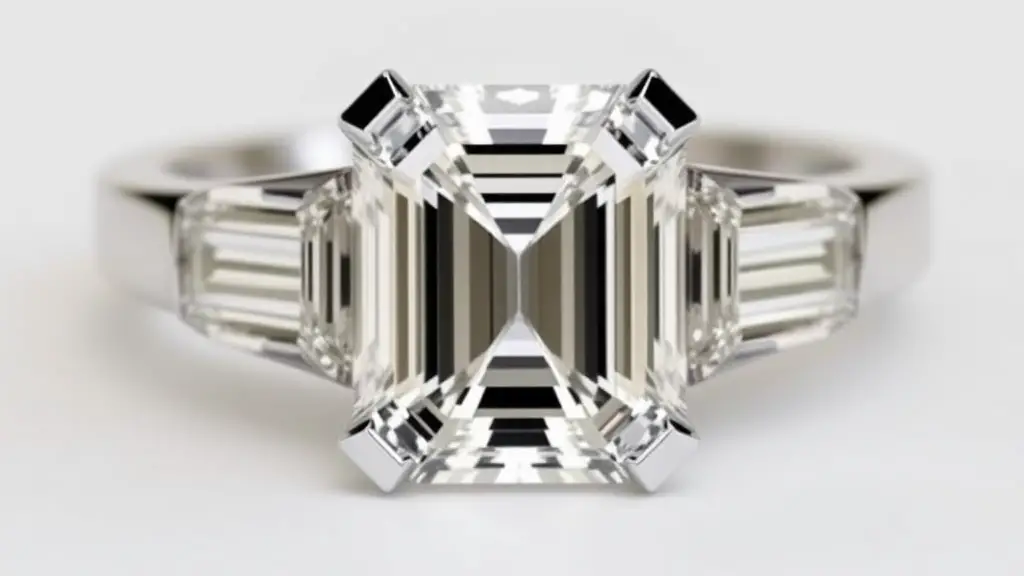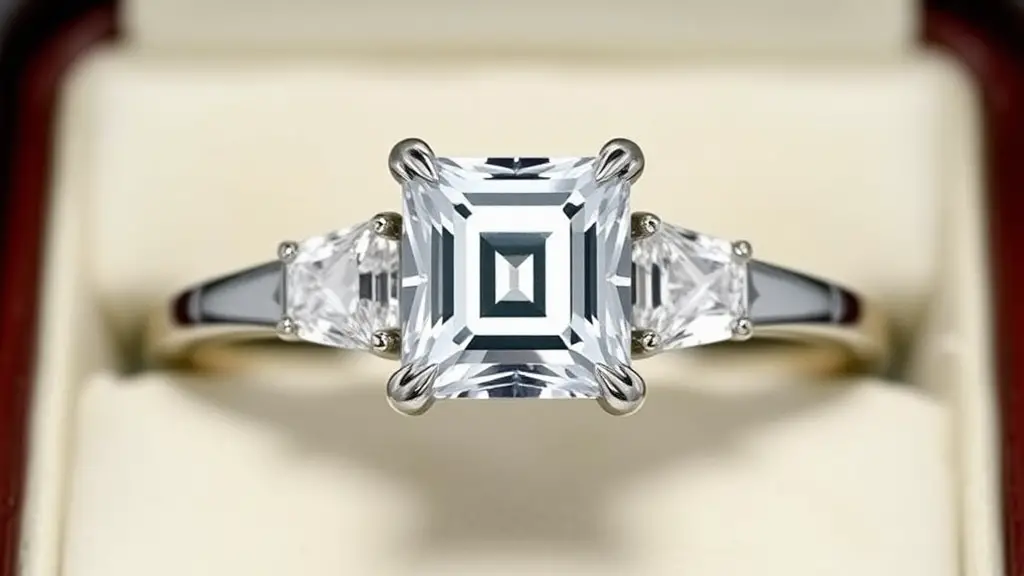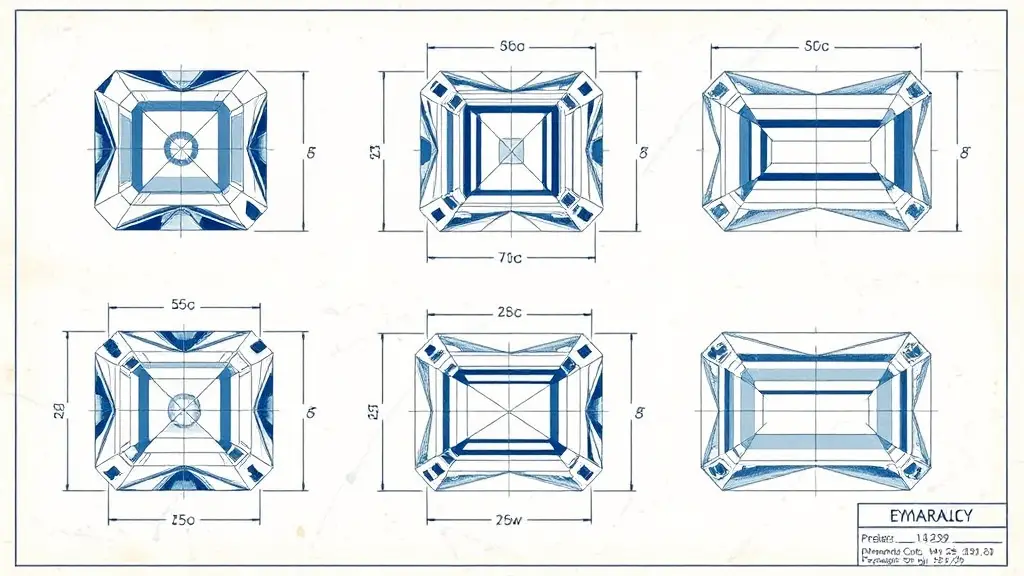
The most important stage in the processing of gemstones, which determines their appearance in the future, is, of course, the cut. It is quite possible to get confused in the varieties of faceting, but all experts divide them into 3 groups:
In this article, let’s talk about step cuts. And let’s consider the most popular step cut for Emerald cut diamonds.
In general, a step cut of any type (“octagon”, “asher” and others) implies a parallel arrangement of facets. This means that a crystal subjected to such a strictly geometric treatment can only have a rectangular or square shape.
Such symmetry, of course, worse reveals the brilliance and play of the stone, but perfectly emphasizes its purity, depth and transparency. In addition, it is ideal for colored minerals and crystals with a hue.
Rectangular diamonds from Cartier
But back to our diamond “emeralds”. As is clear from the name, the first stone for which such a cut was used was not a diamond at all. Back in the Middle Ages, smaragdas (an obsolete name for emeralds) were cut in this way.
According to some sources, from the XV-XVI centuries, the emerald cut began to be applied to diamonds as well. It is difficult to confirm the reliability of this fact. But the name of the brand that popularized the rectangular shape is known. It is the famous Cartier.

Fig 1. Cartier ring with rectangular-cut diamonds
In the 20s of the last century, the Art Deco style came into fashion, characterized by clean powerful lines, strict “industrial” aesthetics, and stylization. These trends did not pass over jewelry art. Cartier’s craftsmen made it easy for fashion-conscious beauties to wear jewelry with “angular” diamonds with a step-cut Emerald cut.
In addition to the “trendiness” of the emerald cut, it attracted the attention of jewelers for one more reason – the Emerald cut proved indispensable for processing diamonds that were not deep enough to form a full pavilion.
What an emerald cut stone looks like
Externally, a stone with a rectangular cut resembles an ancient Aztec temple. If you have ever seen one in person or at least on a photo, you can well imagine its rectangular shape with beveled corners, a wide upper platform from which tiers of steps descend from below.
In this case, the “weak points” of the stone – sharp edges, which can be easily damaged, are cut off. This creates a projection of an octahedron (by the way, an octahedron is the natural shape of a diamond). “Steps” formed by rectangular facets have different lengths: from the girdle to the pad it decreases, and from the calette to the girdle it increases.

Fig 2. Schematic of the Emerald cut (rectangular shape)
A reasonable question is how many facets does the Emerald cut have? Traditionally, the Emerald has 65 facets:
The word “traditionally” with regard to the number of facets is not used casually. The cut is called a fancy cut, and therefore an emerald diamond may have any number of facets – 49, 51, 53, and so on. It all depends on the proportions and characteristics of the stone.
Pros and cons of the Emerald cut
Diamonds are the most perfect thing created in the co-authorship of man and nature. Why are “emerald” diamonds loved, and what features do you have to put up with?
Less brilliance
An emerald-cut stone has a less brilliant brilliance compared to round stones. Instead of a mesmerizing “fire” in the depths and a marvelous play of light on the facets, you’ll see more of a hall of mirrors effect, with alternating dark and light areas. This contrast makes the flashes of light in the facets appear more dazzling.
More fragility
Another feature is the relative fragility of a rectangular-shaped stone. But this problem is solved by a competent choice of setting.
Demanding characteristics of the raw material
Emerald cut makes special demands on the purity of the diamond. Emerald cut mercilessly exposes and intensifies any flaws of the stone – non-ideal transparency, foreign inclusions, the lightest shade. But it is wrong to call the latter a flaw. Yes, the faceting is a delightful way of conveying color. Any shade of the stone will be enhanced and presented in the most favorable way.
In addition, the elongated shape of the stone, for example, in a ring, will visually “elongate” and narrow the finger, making your hands look more aristocratic.
And lastly, a rectangular diamond with good clarity will always be perceived as larger, more massive and transparent than its round counterpart with the same characteristics.
Prepare to be different
Emerald-cut diamonds are not as popular as the round “classics.” To wear jewelry that, to put it bluntly, looks somewhat brutal, you need courage, self-sufficiency, self-confidence and a desire to stand out in the crowd. But do not forget the favorite truth of marketers – “notice only what is different from others”. So, if you decide to choose a fancy emerald-cut diamond as an inlay, be prepared to be the center of attention time after time.